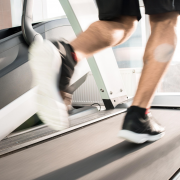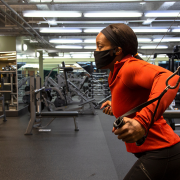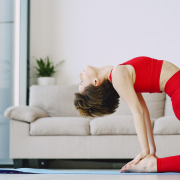Runners, Take Note: These 8 Exercises Could Help Prevent An Injury
Whether you run for 15 minutes to relieve stress or you’re training for your 100th marathon, you are considered a runner in my books. Unfortunately, runners are quite injury prone because of the redundant nature of the activity, the lack of stretching and the absence of cross training.
If you have ever been to a yoga class, you can easily spot the runners in the class because they tend to be the least flexible participants in the room. Additionally, when you are at the gym, it’s easy to spot the “cardio junkies” because they jump off the treadmill without following up their workout with any particular stretching or cross training.
After injuring myself while training for my first marathon, I quickly learned the importance of stretching and cross training to prevent injury. No matter where you are in your running journey, these stretches and exercises will benefit your overall fitness routine and can help ward off running-related injuries.

Favorite Stretches for Runners
My general rule of thumb for stretching: if you used that muscle during your workout, then you should stretch that muscle after your workout. Stretching is an important piece of injury prevention, and it really only takes a couple of minutes out of your day. The stretches below are some of my favorites that I like to incorporate with my patients who are runners.
Hip Flexor and Quad Stretch
In the half kneeling position, with your knee on a mat/cushion, tuck your tailbone and push your hips forward. You should feel a stretch in the front of your hip on the side that is in the kneeling position.
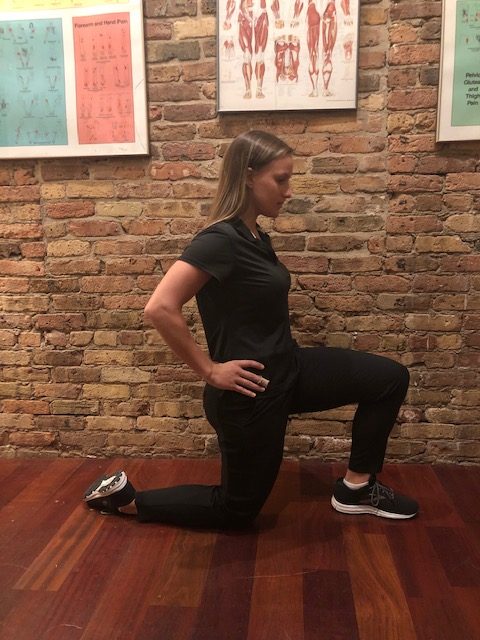
For an added quad stretch, reach behind you and grab your ankle to bring it close to your glutes. Perform 3 sets of 30 second holds on each side.
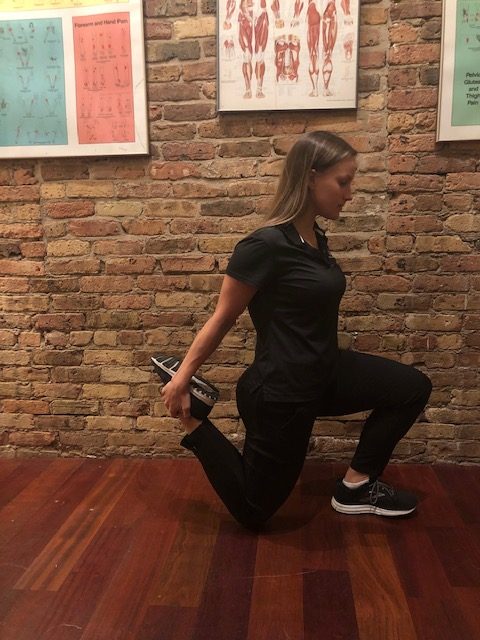
Hamstring Stretch
Lying on your back with your knees straight and legs resting on the floor, loop a belt or strap around the bottom of your foot. Use the belt or strap to perform a comfortable stretch behind the back of your leg and knee. Perform 3 sets of 30 second holds on each leg.
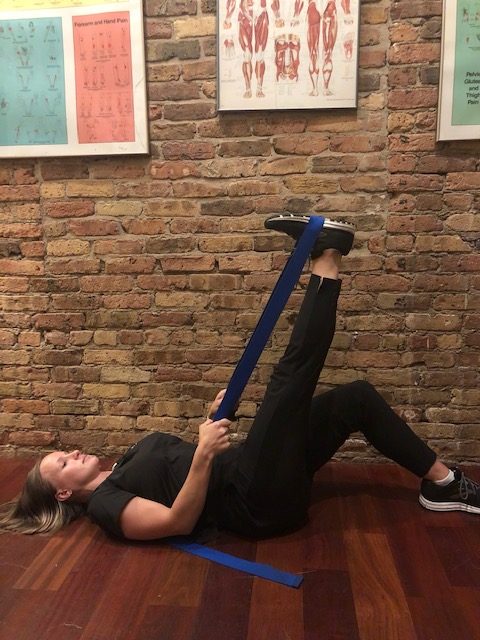
Figure Four Stretch
Lying on your back with your knees bent and feet flat on the floor, cross the leg you intend to stretch across your other leg keeping your ankle at your knee. Place both hands behind the thigh of your uncrossed leg and gently pull your knee towards your chest, feeling a stretch in the buttocks of your crossed leg. Perform 3 sets of 30 second holds on each leg.
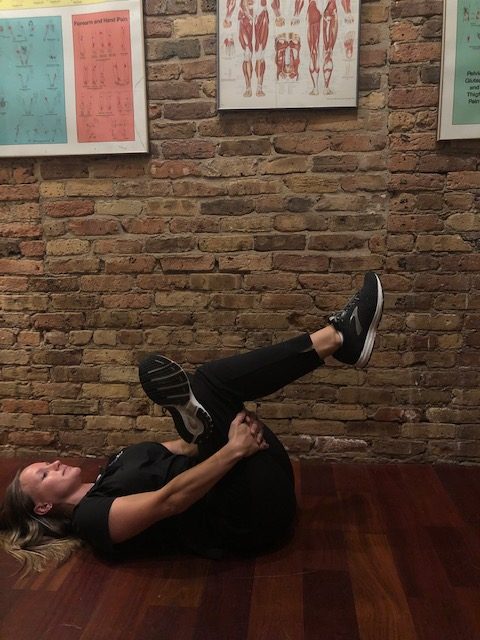
Calf Stretch
Find a step or a wall to put your toes on, straighten out your knee, then push your heel down into the floor and lean into the wall. Do this with your knee straight and then a slight bend in the knee. Perform on each side for 3 sets of 30 second holds.
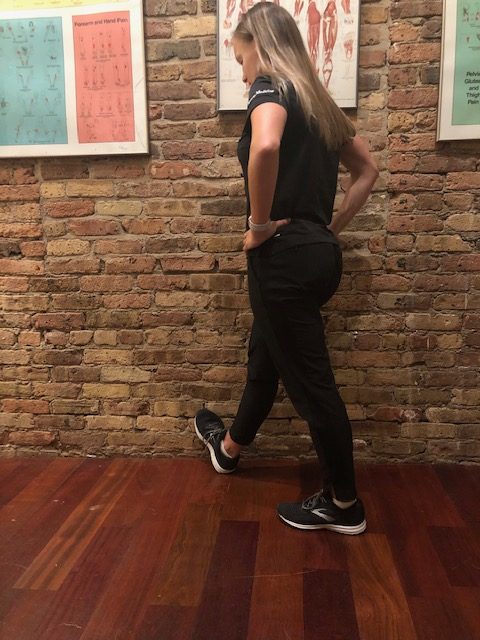
Favorite Exercises for Runners
Runners typically have poor single leg stability and lack strength in their glutes. Coincidentally, these weaknesses are directly related to one another. The exercises listed below will target many different muscles in the posterior chain that will ultimately build strength in the muscles that are often weak in runners.
Lateral Lunges
Start by standing with feet at shoulders width apart. Take a small step sideways toward the side to be exercised, shifting your weight onto that foot and allow the knee to bend. Perform 3 sets of 15 repetitions.
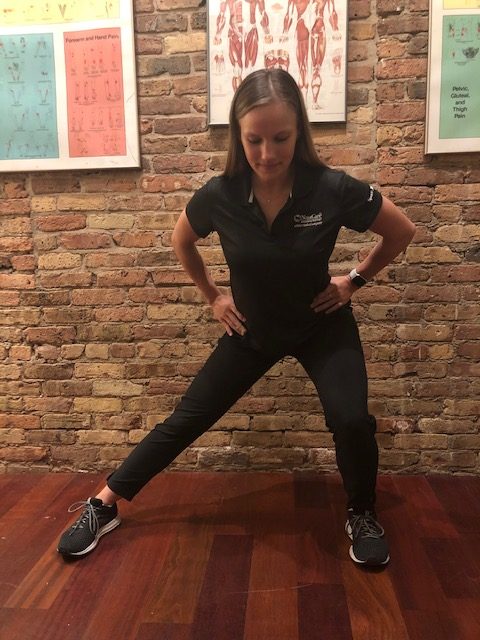
Single Leg Bridges
Begin by lying with knees bent and both feet flat on the floor with arms at your sides. Lift one foot off the floor towards the ceiling and straighten the knee. With one leg, squeeze your glutes and raise your hips off the surface trying to keep your hips level. Perform 3 sets of 15 repetitions.
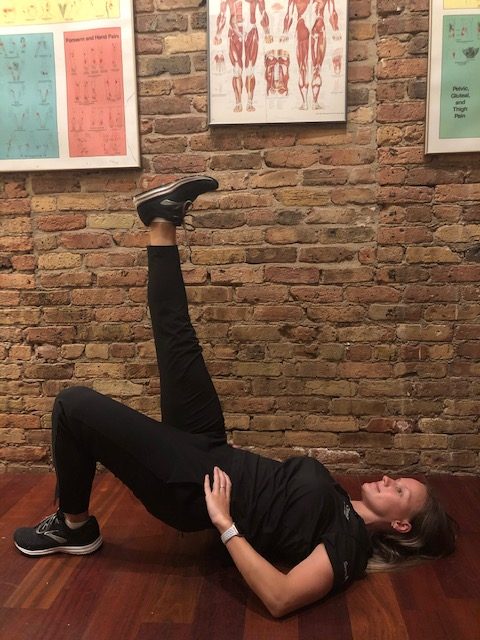
Side Lying Hip Abduction
Lie on your side with the side you intend to exercise upwards. Keep your knee straight and lift your top leg up towards the ceiling. Avoid pointing your toes towards the ceiling by keeping the outside of your foot parallel with the floor, and make sure to stay lying directly on your side and avoid rolling backwards. Slowly lower your leg back to the starting position. Perform 3 sets of 15 repetitions.
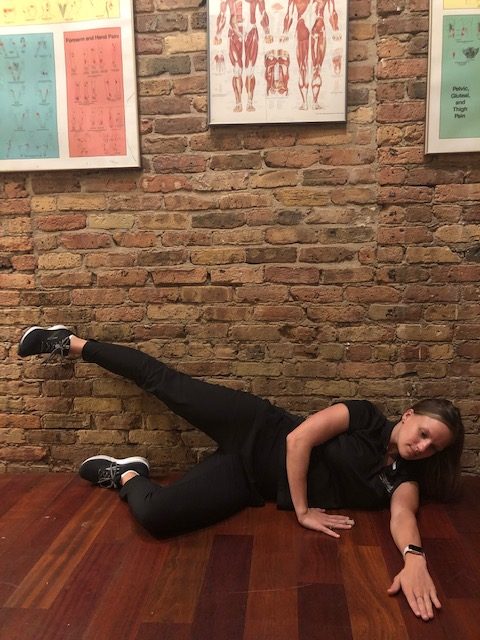
Fire Hydrants
Starting Position: Begin in quadruped position with hands directly under shoulders and knees directly under hips. Engage your core by bringing the belly button towards the spine. While maintaining a tight core, activate your glutes and slowly lift one leg out to the side, keeping the knee bent. Only go as high as you can without letting the back arch. Slowly return leg to starting position. Repeat on opposite side. Tip: Do not let your back arch by keeping your core and glutes engaged throughout. Perform 3 sets of 15 repetitions on each side.
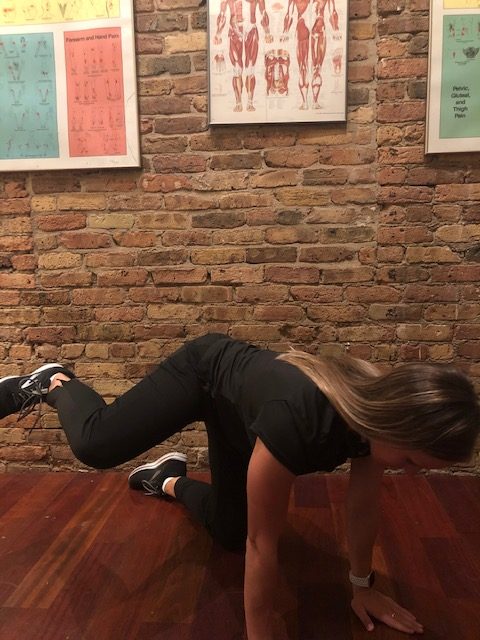
If you are feeling pain while running, that is non-emergent, NovaCare offers free injury screens that can easily be set up so that you can understand your injury and get a recommendation about where to go and what to do. There are so many injuries that can occur with runners so it is impossible to address them all in one article.
Additionally, Video Gait Analyses (VGA) are available at select NovaCare facilities. Video Gait Analyses utilize force plate technology combined with videography to identify discrete biomechanical faults that could be impacting your running form. VGAs can be done with or without a script to help meet your running needs. To find out more information, call your local NovaCare Rehabilitation.


Post written by FFC Contributor and NovaCare Lincoln Park Physical Therapist Claire Remec.

Claire Remec is a physical therapist at NovaCare Rehabilitation’s Lincoln Park center. She brings a soothing level of energy and outgoing personality to the patients she treats. Claire enjoys running and treating patients of all kinds, is experienced in Women’s Health therapy, and has a passion for promoting wellness for all.

